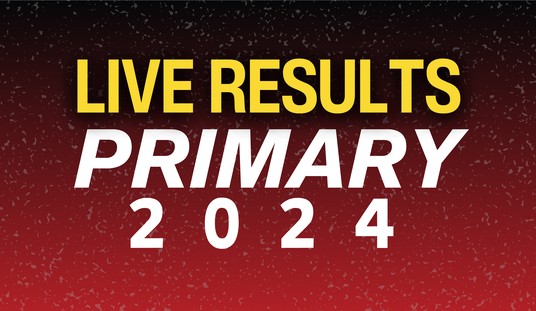In olden days, about a year or so ago, mortgage rates were a reflection of the economy. They were set by lenders who reacted to the market for mortgage backed securities which of course was influenced by the movement and direction of the Treasury bills, notes and bonds. The Treasury Securities were trading at a particular range guided in some part by the actions of the Federal Reserve. All of these were simple textbook responses.
Not so anymore!
Today, some of us now feel the actions of the mortgage market have been dictated in part by the Federal Government's social engineering, by individual state laws, public pressure and the media. The mortgage backed securities market appears to have decoupled from the Treasury markets influence and each lender seems to be acting on their own. This makes it very difficult for individuals, sophisticated or unsophisticated, to know where to look for the information that can pertain to their individual situation. The mortgage industry, feeling the affects of the black eye it received from its past actions is struggling to redefine itself. This struggle can touch all homeowners. I will attempt to explain each point I raised in order to give you the broadest appreciation of the new complexity in the mortgage industry.
The Federal Government now controls Fannie Mae and Freddie Mac, the largest purchasers of mortgages in the country. They now have the power to control directly who will get a mortgage or who will not. Although the banks have frozen up and haven't begun to thaw, they do offer conforming loans, those that conform to the rules of the above mentioned mortgage giants and thus can be sold to them. Most banks still refrain from offering portfolio loans in the mortgage arena which are the loans that they would hold in their own portfolios. They also do not have the ability to form mortgage pools to put out the jumbo loans, absent for the most part from the mortgage market, because there isn't a market for these pools on Wall Street.
Recommended
When we first had our taste of what was in our future, the stimulus loans which expired on New Years eve 2008, we found that Fannie and Freddi had offered relief by counties in some states instead of the entire state. This also held true for FHA loans which are under HUD. It helped some people who were in the "right" counties in those chosen states and left many others in the "wrong" place scratching their heads. Obviously housing would be more robust in the areas where you could get a larger mortgage than the area where you couldn't. Would this be social engineering or redlining?
The new year, 2009, did not rectify this, but instead enlarged it for the first time ever since Fannie and Freddie began setting the conforming loan limits each year. They chose approx. 20 states to become "high cost" states to mirror the high cost other states, Alaska and Hawaii. Everyone was to move their limit to $625,500 from $417,000 except Hawaii who moved to as high as $726,000 for a single family residence. But the rules were not for each state, but for selected counties within a state and not all to $625,500. Confusing? In California you can have different limits in the same "atmosphere" within given cities. Beverly Hills has a limit of $625,500, but not Santa Barbara or La Jolla. Santa Barbara is in the low $600,000 range and La Jolla is $550,000+. Scotsdale, Arizona is $417,000 and hundreds of other high real estate valued cities are also limited to $417,000. Who decided to do this by counties and why?
Every county has huge diversions in the property values within their jurisdictions but probably none so wide as in California. Los Angeles county has the high values you would find in Beverly Hills, Bel Aire, Malibu, Palos Verdes etc. and the lows you would find in parts of the San Fernando Valley, East Los Angeles, around the harbor and several other places. Trying to weave ones way through this jigsaw puzzle is trying at best. What also adds to the problem is the lack of a vibrant jumbo market, meaning people with $417,001 mortgages haven't a viable alternative for home financing. And how fair is this to other states such as Minnesota and New Mexico who remain at $417,000 for the entire state?
The next big problem is the lack of stated income loans that were part of the mortgage fabric for decades. What do you do for those who acted based on a rule, never had a problem or a late payment and now the rule is changed and they cannot participate?
One actual example should point out the problem. An independent businessman who became a financial broker, working from his house, found it impossible to refinance and lower his payment. His house appraised for $975,000, down from his last appraisal of over $1 million. He has a 780 credit score and over $500,000 in liquid assets. His loan was $399,000 and he simply wanted to lower his payment. Because he didn't show enough in taxable income he was declined. Was this really a risky loan? Are you convinced he couldn't make his payments?
Before you make up your mind lets look at what actually happened. Fannie Mae and Freddie Mac have an automated underwriting system (AUS) that would have approved him in a second up until they made a major change late last year. Evaluating his high credit score and low loan to value, plus large reserves, their only requirement would have been a CPA letter saying the borrower was self employed for over two years. When that changed thousands of self employed people were in trouble. It has been replaced with one year tax return that will allow up to the low 60% debt to income ratio. If you earn $15,000 gross a month you can have a monthly debt load of over $9000 a month and be accepted for a loan.
Better idea?
Are these new ways of operating a product of the hysteria whipped up by the media who prints first and discovers afterward? Should politicians who have left us in the largest financial mess we have seen in many decades dictate the rules that they don't understand? I believe the turnaround in real estate is being hampered by those who are here to help and won't be fullly underway until they are out of the way. What do you think?

























Join the conversation as a VIP Member